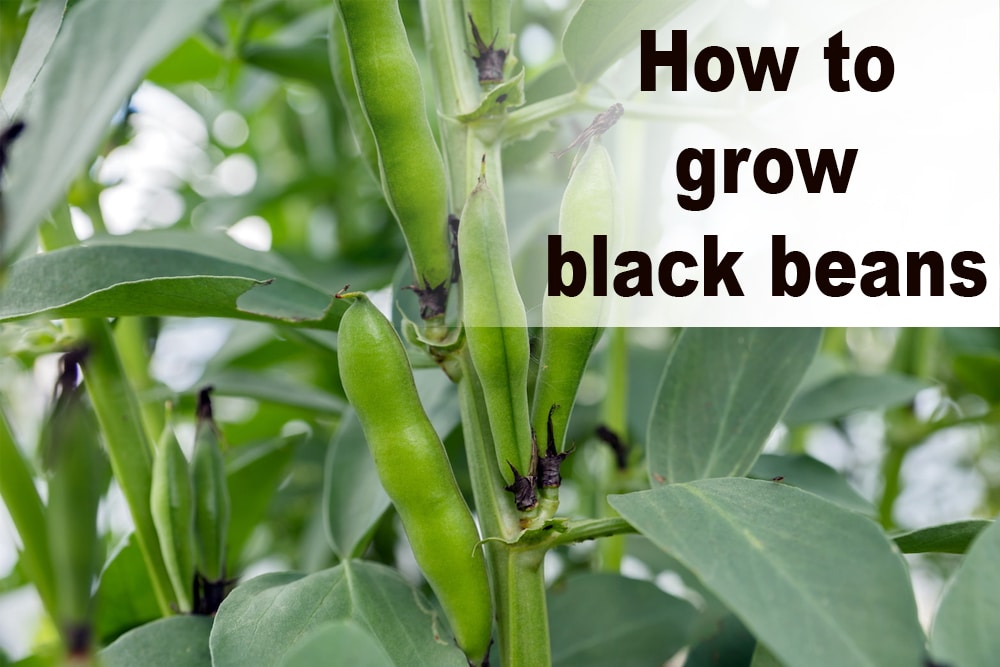How to grow black beans
Black Beans can be grown at home and is a simple process that can yield a full crop within roughly three months. Black beans grow best with warm temperatures and will do very well during the warm summer months, usually around late spring. They are sown in spring once the risk of frost has passed. Do not plant Black Beans seeds into the garden immediately after frost when the soil is cool or wet, the seed will get rotten. Your plants should see about four to five months of consistent, warm weather for successful germination and growth. Choose a spot in your garden that gets plenty of sunlight, and is unobstructed by other plants or other shade sources for your black beans growing.
The seeds germinate best in warm soil with a temperature between 68 to 80 F (20 to 27 C). Black beans take between 90 and 140 days to yield a harvest. Due to their shallow roots, black beans don’t do well when transplanted, so use black plastic mulch to warm up your soil if you have a shorter growing season. Do not plant your black beans in the same spot where other legumes have grown within the last few years.
Black beans growing
Mulch your soil to help can help in maintaining moisture, keep it warm, and prevent weed growth. Start mulching your plants after they have sprouted a few leaves, and keep the mulch away from the stems to promote aeration.
Protect and support your beans. Check the soil around your bean plants in your garden frequently for pests like aphids and rinse them off using a hose, or introduce beneficial pests like ladybugs into your crop.
For a greater and more continuous yield, you can plant pole beans using a trellis for support. If you want to harvest your beans all at once, you can plant bush beans.
When to harvest
Once the bean pods on your bush or poles have turned yellow and dry then your black beans are ready to harvest, typically anywhere from 90 to 140 days after planting, depending on the variety. Snip away the ripened pods from the plant to harvest your beans using a scissor. For bush beans, you can harvest the pods all at once, but pole beans will continue to yield throughout the season so make sure you check your plant and harvest regularly. Black beans are a staple food of Mexican and Creole cuisine.
How do beans grow step by step?
Black Beans growing does well in slightly acidic to neutral soil, pH between 6 and 7 that is well drained. Test your soil to make sure that the levels are correct. Make sure that you have loose, well-draining soil so that water doesn’t pool. You can also use a legume inoculant —a bacteria used to feed the soil and kickstart nitrogen production—when planting to boost the beans’ growth. Sandy soils are not very good for bean growth while clay or silt loams are better for bean production. Use well-rotted manure or compost at planting to increase soil organic matter.
After preparing the garden, plant the bean seeds directly into the soil about 9-12 inches away from each other. They can be grown at home in either pole or bush varieties.
Dig a 1-inch deep hole, place the seed, and cover it with soil properly. Water the seeds regularly for 3-4 days, to aid the germination process and the plant to grow. Black beans have a variety of uses in dips (like black bean hummus), spreads, salads, and soups much like other beans such as garbanzo beans, pinto beans, or kidney beans.
What is the life cycle of bean?
What are the main stages in the life cycle of a black bean plant? There are four main stages in the life cycle of a bean plant: seed, germination, leaf growth, and flowering.
You can also check out other varieties around the world here
Best guide to successful beans farming, varieties and where to buy seeds

